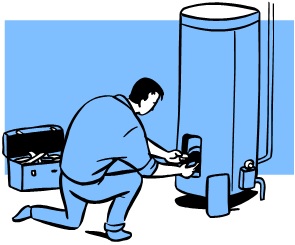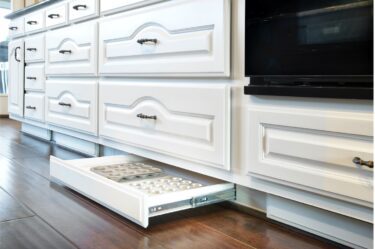This weekend I noticed a small trickle of water coming from underneath the water heater closet door at my home. According to my past water heater blog, I had been neglecting my water heater. The stamp on the water heater told me it was 20 years old, which means it’s at the end of its life cycle. As a contractor, I could see that my water heater was a model that wasn’t to current code standard. My plumber hadn’t seen it in 5 years or so. The good here is that I was a bad example for others to learn from! All kidding aside, I was very fortunate that the water heater didn’t spring a major leak whilst I was away and ruin the hardwood floors, or worse.
After the new water heater was installed, I was checking out the heat regulator, which was very different from the 20-year-old model, and the obvious question surfaced—at what temperature should I set it? I talked to the plumber and Googled around and found out the answer is that it depends on your needs and concerns.
A person living alone has needs very different from a house full of people. If one lives alone, and has a set schedule, the water heater could be turned on 30 minutes before bathing to save energy. If there is a house full of people, the temperature may need to be kept on the hot side to mitigate the high usage. No matter how you use your water heater, here are three things you should know:
1. Warm water can encourage microbiological organisms that can kill you. Hot water will kill the microbiological organisms. The suggested temperature range for water heaters are 120 degrees—which prevents scalding and saves energy—up to 140 degrees, which will kill just about any organism. To learn more about why hotter water is better, check out this information from OSHA.
2. How to check your hot water temperature. The little dial you manipulate is just a general gauge. If you really want to know what your water heater is heating to, run some hot water to make your water heater start heating. Wait until it quits heating. Run the water at the faucet nearest the water heater and wait until the water reaches maximum water temperature. Use a cooking thermometer to see how hot the water is. Adjust the temperature on the water heater to your desired level.
3. Learn what you need from hot water. Self-awareness of your hot water needs will help you save money and keep you and your family safe. If you are unsure of how to operate your water heater or what temperature setting is best for you, ask a professional plumber to take a look and make a recommendation. The cost of a service call might be small compared to your family’s safety—and the money it can save you in the long run.
Be safe,
Mike








